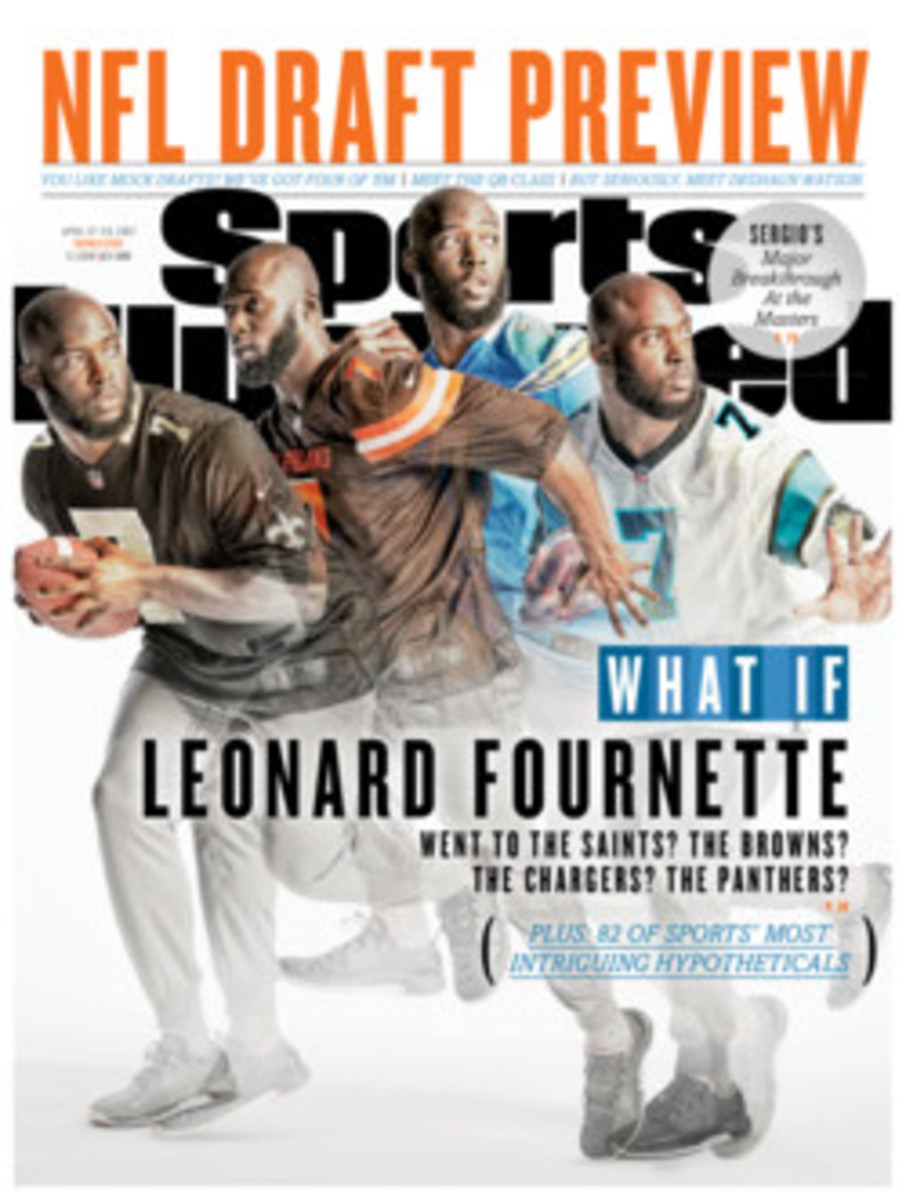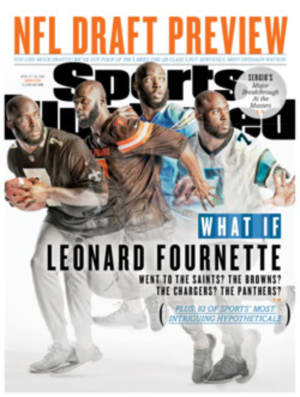
UPSIDE-DOWNSIDE
ANALYZING THE FOUR OTHER HIGH-PICK PLAY-CALLERS, AND SIZING UP WHERE THEY'D FIT IN BEST
THE 2017 DRAFT, on the surface, doesn't offer the most enticing crop of quarterbacks. The five best—including Deshaun Watson—would benefit from sitting and learning early in their pro careers, because the transition from college is harder than ever. It stems largely from limited on-field practice hours. College coaches mostly only have the time to teach their quarterbacks what works at that level: a lot of spread formations and one-read throws. When those QBs reach the NFL, they're ill-prepared to make the adjustments necessary to counter more complex defenses. And even then there's not much opportunity for instruction: The NFL's 2011 collective bargaining agreement reduced practice hours so drastically that teams can only afford to give reps to their starters.
Based on my own study and on scouting reports from draft analyst Greg Cosell of NFL Films, it's clear that the top talent in this year's class will need time to blossom. Here's a look at the most notable quarterback prospects not named Deshaun Watson, and the NFL team that would best suit each one.
MITCHELL TRUBISKY
NORTH CAROLINA
FROM A pure throwing standpoint, Trubisky is similar to the Redskins' Kirk Cousins. He has a quick motion and good (not great) arm strength. The concern is Trubisky might compare more with the Cousins of four years ago than with the one of today. There are kinks in his mechanics. Trubisky has a tendency to lock his front leg, which can affect accuracy—a glitch many coaches believe you can't correct, only work around. He will also needlessly change his arm angle and move his feet upon release, diminishing the zip on his throws. Trubisky's best hope for success hinges on his poise in the pocket, a prerequisite for quarterbacking in the NFL. He is not afraid to get hit.
Trubisky is also athletic and can make exceptional plays on the move, though this ability to excel outside structure must be a facet of his game, not its foundation. At North Carolina he took every snap from shotgun. In today's NFL about 40% of snaps are from under center. Teams that want to minimize the quarterback's impact do so by building their passing game off their running game, which requires that the QB play from center. Trubisky could thrive in a place like Buffalo. New Bills offensive coordinator Rick Dennison will likely run a scheme for Tyrod Taylor that often puts the quarterback on the move by design, with rollouts and bootlegs. For a quarterback on the run, reading only half the field, pocket mechanics aren't as much a factor. Trubisky can rely more on his instincts, and that's when he's at his best.
DESHONE KIZER
NOTRE DAME
UNLIKE MOST of this draft's QBs, Kizer gained experience with pro-style passing concepts in college. The Irish's system often had receivers' routes intersect and correlate. One concern, though, is that Kizer was a beat late with many of his reads. He didn't always appear to anticipate things clearly. You can get away with that in college, where the field is more spaced out and the defenders are a tad slower. But in the NFL delays in timing lower your ceiling.
Inevitably, a few coaches, titillated by the 21-year-old's arm, will believe that they can teach Kizer to read the field more quickly. As a thrower, no QB in this draft looks the part more. He has good arm speed and a concise motion, which translates to velocity. He is also an athletic mover. But his accuracy vacillates too much for a player with his talent. In the pocket he's tough but has a tendency to drift around lazily, which leads to mental and mechanical breakdowns.
Kizer would fit best in a system that features complex route combinations to help define the quarterback's read. No team is better at this than the Redskins, who could consider drafting Kizer as a replacement for the soon-to-be-very-expensive Cousins. Another team that creates defined reads from intricate route combinations is Cleveland. Kizer may not be the safest QB in this draft, but given his experience at Notre Dame, he's the one most ready to play right away. The Browns won't take him at No. 1 and probably not at No. 12, but they could trade back to get him later in the first round. Or, if Kizer is still on the board, pick him when they open the second round.
PATRICK MAHOMES
TEXAS TECH
PLAYERS LIKE Mahomes are what makes the draft so difficult. He has the arm to be a big-time NFL quarterback. His delivery is quick and compact, and he throws with velocity and precision. He moves well too, especially when he's outside the pocket.
Mahomes's glaring problem is a lack of refinement. His default approach is to go into sandlot mode, which is alarming given that the Red Raiders ran a timing-based spread passing game. Mahomes has keen vision at the deeper levels once a play breaks down. However, when a play doesn't, he rarely throws with timing and anticipation. By moving needlessly in and out of a clean pocket, Mahomes becomes less accurate and consistent than his skills suggest he should be.
So what team is a good fit for Mahomes? One with a tightly managed, quick-strike passing scheme and a coach who will hold him accountable for undisciplined play. The Chargers' first-time coach, Anthony Lynn, can speak to players; their offensive coordinator and passing-game guru, Ken Whisenhunt, would have Mahomes play on time and from the pocket. Also, sitting for a few years behind Philip Rivers—who turns 36 in December and, with eight kids at home, may not try to extend his career much longer—would be a great way for Mahomes to learn from the most disciplined and professional of quarterbacks.
DAVIS WEBB
CAL
WEBB PLAYED in Air Raid offenses at Texas Tech and during his one year at Cal. In that scheme the QB is always in shotgun and many of the plays have only one read, which makes projections particularly challenging. However, Webb had ownership of his offense and, working with former Redskins head coach Jim Zorn this off-season, he has developed a growing understanding of a variety of systems. At 6' 5" and 230 pounds, Webb has a prototypical NFL build. The jury is still out, however, on whether Webb has the toughness to play tall in the pocket. He must get better with defenders in his face.
Webb's lower-body mechanics need polishing as well. That's not atypical with Air Raid quarterbacks. His accuracy occasionally waivers. This is not glaring, though, and can maybe be cleaned up in the right system. As just a pure passer, Webb has not yet reached his ceiling. Some of his deep balls can leave onlookers speechless.
While Webb doesn't have the snappiest throwing motion, it is an efficient one. And when he's on, his ball location can be very good, including at the deeper levels. That suggests he'd fit a more traditional drop-back passing game. No scheme makes better use of guys like that than the Cardinals'. Coach Bruce Arians's system is built on multi-receiver route combinations at the 15- to 18-yard range (and beyond). In Arizona, Webb would have to get comfortable with deeper multi-progression reads, but he'd have time to do so under a terrific mentor in Carson Palmer.

